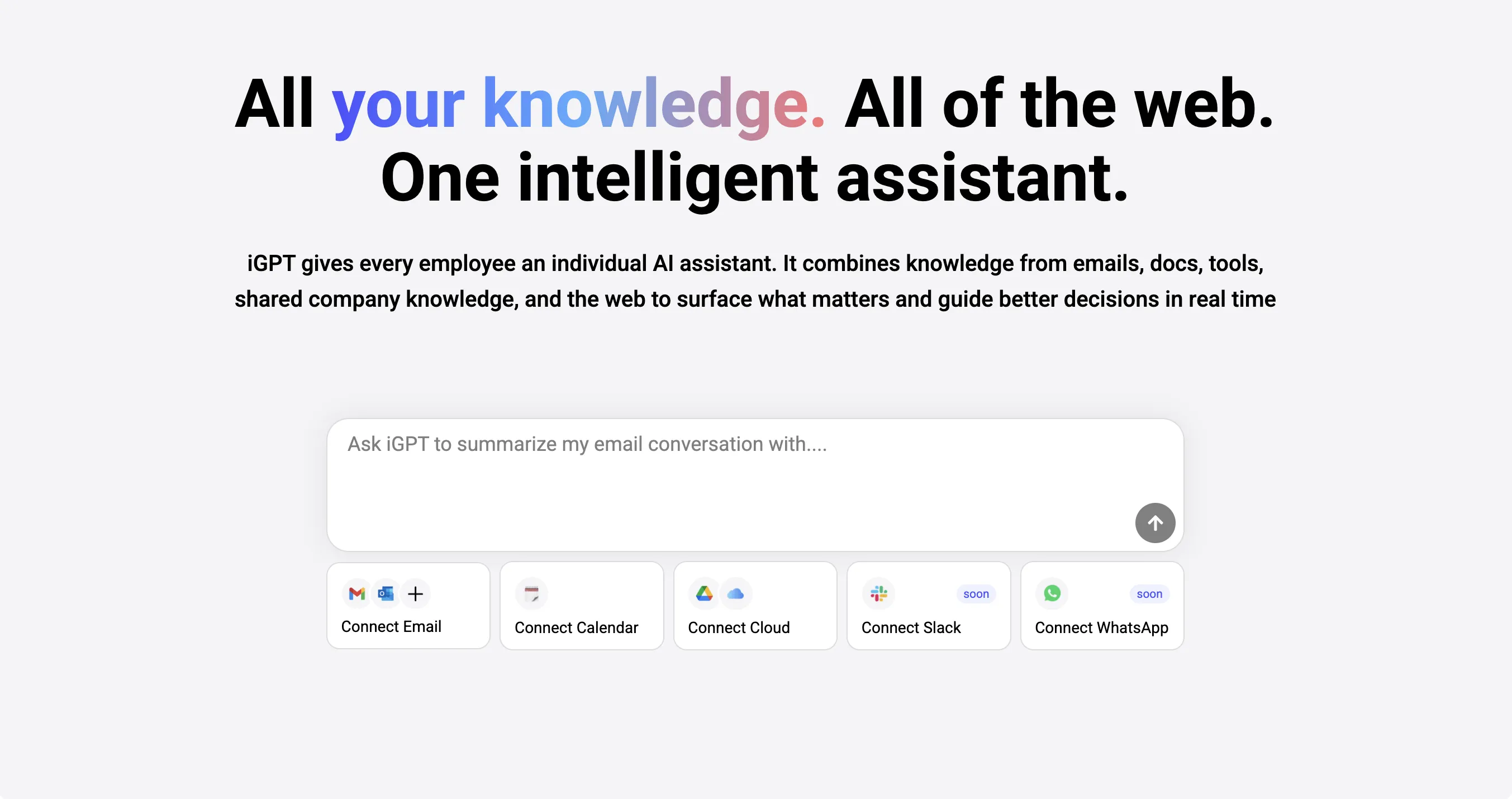Why "generic GPT" can't write your next email

You can use AI software to write all your emails, or so it seems. The premise is simple: copy-paste the email you received, add “write a reply,” and the GPT spits out a passable response with plenty of unnecessary flourishes and generic phrasing.
If you want to go the extra mile, you provide some context. “Write me a reply that gives them a distribution plan for the materials they need,” or whatever. Then you get a reply with the context you asked for, still generic language, and a placeholder that you might embarrassingly forget to customize.
Yes, you could provide extensive context in the prompt, but is that more worthwhile than writing an email yourself? If not, then what’s the point? Writing it yourself will almost certainly be better and take the same amount of time.
This isn’t efficiency. It’s outsourcing the first draft to a system that has no idea what you’re talking about. The time you spend correcting AI-generated content often exceeds what you’d spend writing from scratch with full knowledge of the context. Instead of delegating the task, you’re outsourcing the guesswork.
This leaves you with the burden of extensive editing and refinement. Instead of enhancing productivity, generic AI introduces a new form of labor: editing AI output, which is itself time-consuming.
There is a better way, but it requires understanding why current AI fails so predictably.
Why contextual AI fixes the problem
Generic language models, despite their impressive capabilities, are trained on everything except you and your specific circumstances. Without access to your personal and business context, these systems don’t genuinely compose. They generate plausible text based on patterns observed elsewhere.
These models have no access to your most important information sources: your email history, documents, CRM data, and customer interactions. They don’t know your brand’s unique voice, tone, and mission. They can’t reference the pricing discussion you had with Jane last week or remember that she prefers Friday afternoon meetings.
The solution requires access to the information that matters. Contextual AI works by connecting to your actual data: past emails, documents, meeting notes, CRM records, and project histories. Rather than guessing based on internet patterns, it adapts to your voice, workflows, and specific situation.
It doesn’t generate text in a vacuum. It retrieves relevant information first and then composes something that makes sense for your specific situation.
The difference becomes obvious when you compare outputs:
Prompt:
“Write a follow-up to last week’s pricing discussion with Jane.”
Generic GPT:
“Hi Jane, I wanted to follow up on our previous conversation about pricing. I’ve given some thought to the points you raised, and I’m interested in continuing our discussion. Please let me know when would be a good time to connect.”
It’s grammatically correct and polite, but utterly devoid of value. It could be about any product, pricing tier, objection, or relationship. Jane could be a prospect or a vendor. The AI has no idea, so it hedges with vague language that you’ll have to completely overhaul anyway.
Contextual AI:
“Hi Jane, Following up on our discussion about the Enterprise tier pricing for TeamFlow last Thursday. I’ve prepared the custom pricing model that addresses your concerns about the per-seat cost at your scale. As you requested, I’ve included the volume discount structure starting at 250 users. Would you have time this Friday at 2pm to review these updates, as you mentioned that’s your preferred meeting time?”
Notice the difference?
How it works: retrieval before generation
The technology behind this isn’t magic. At its core is a process called Retrieval-Augmented Generation (RAG), which works like having an assistant who checks your files before writing anything.
First, the system creates “embeddings” from your documents and emails, like digital fingerprints that capture the meaning of content, not exact words. This means the system can find information about “pricing concerns” even if the original document used terms like “cost issues” or “budget constraints.”
When you ask it to draft something, it searches through these fingerprints to find relevant documents, extracts important details, and only then generates a response that incorporates this specific information.
Privacy controls ensure information stays within appropriate boundaries, so your data remains private while becoming actionable.
Real-world benefits across teams
Teams using contextual AI see concrete improvements:
Sales teams spend less time drafting follow-ups because responses reference specific customer pain points and objections. Proposals improve through automatic inclusion of relevant case studies and pricing models, with RFP software ensuring responses are accurate and timely.
Team messaging stays consistent while preserving individual relationship contexts. Time shifts from information hunting to relationship building.
Customer support resolves issues faster with immediate access to previous customer interactions. Response consistency improves through automatic inclusion of accurate product information and policies. Complete initial responses reduce escalations. New support staff perform like veterans from day one.
Knowledge workers eliminate hours searching across siloed systems. Meeting preparation improves with communications that incorporate relevant context. New employees access institutional knowledge immediately. Mental energy focuses on high-value thinking rather than routine composition.
What this looks like in practice
Imagine an AI that writes emails that actually sound like you because it’s learned your writing style from your sent folder. It summarizes long threads accurately because it can actually read them. Most impressively, it might say something like “Remember to include the updated pricing sheet you promised Jane last week” because it knows your commitments.
The benefits multiply when your whole team uses contextual AI. New team members get up to speed faster because the AI helps them access institutional knowledge. Customer support becomes more consistent because everyone has access to complete customer histories.
Companies focusing exclusively on model size or general capabilities are investing in the wrong metrics. The true competitive advantage comes from three key elements:
- Integration systems that connect general language ability with your specific organizational knowledge.
- Secure frameworks that maintain privacy while activating your proprietary information.
- Contextual awareness that enables AI to understand complete business relationships.
Language models lacking these capabilities will continue producing outputs requiring substantial human correction, regardless of their sophistication.
The future writes with you
You don’t need a more eloquent stranger writing your emails. You need a partner that actually understands your work, voice, and context.
This makes the difference between AI that creates additional work through necessary editing and AI that actually completes tasks effectively. It’s not a technical distinction. It’s the difference between frustration and actual productivity.
AI is only as smart as what it knows, and right now, generic AI doesn’t know you or your business. That’s the fundamental limitation we need to overcome.
The next wave of real productivity won’t come from marginally better generic language models. It will come from contextual AI systems that know your work as well as you do, ground their outputs in your reality, and genuinely augment your capabilities rather than approximating them.
Until it knows your world, AI isn’t your assistant. It’s a stranger with a keyboard.
Experience contextual AI that knows your work

Ready to experience AI that actually understands your context? iGPT is being built as the first truly contextual AI assistant for communication. Instead of generic responses, iGPT will understand your email history, conversation patterns, project context, and communication style to provide genuinely useful assistance.
iGPT integrates with your existing communication flow, learning from your actual work patterns to provide contextual intelligence that enhances rather than replaces human communication.
Join the iGPT waitlist to be among the first to experience AI that knows your work context and writes emails that sound like you, because it actually understands you.




